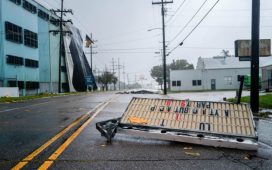In the insurance sector, the tail is wagging the dog.
Reinsurers are a commonly overlooked but vital breed, providing insurance to insurers. They are used to being on the receiving end of their clients’ good and bad underwriting decisions.
But, for the first time in years, it is the reinsurers that are setting the direction. Turn-of-the-year policy renewal negotiations were fraught and late, as reinsurance firms demanded steep price rises at the same time as they pared back coverage in costly areas such as natural catastrophes and those lines exposed to Russia’s war in Ukraine.
Some reinsurance brokers, spooked at the tougher market for their insurance clients, publicly reminded reinsurers of the importance of maintaining long-term relationships, a thinly veiled warning against undue rises.
The higher prices have sparked a re-rating for reinsurers’ stock. Shares in European majors such as Munich Re, Swiss Re and Hannover Re have risen by at least a third in the past six months. But the shift has probable repercussions for the wider corporate sector, too.
One is that it will add fuel to a long upswing in commercial insurance prices. For about five years, the cost of cover has risen, but the pace of rises slowed in 2021 and 2022. Big increases levied by reinsurers are expected to, at the least, lengthen the corporate squeeze as insurers pass on the pain.
Another is that reinsurer action is already leaving insurers and their clients in certain sectors in a more precarious position.
For example, after being spooked by billions of dollars in claims from stranded aircraft, damaged ships and other losses from the Ukraine war, reinsurers have been plugging exemptions into their contracts to avoid being stung twice.
In December, protection and indemnity insurers, which provide liability insurance to seaborne trade, warned that their reinsurers had cancelled certain insurance covers for Ukraine war-related claims. The P&I insurers followed suit, carving the same coverage for conflict-related losses in Russia, Belarus, Ukraine and Moldova out of some of their own policies.
In the wider market, many marine insurers have had to underwrite passages across the Black Sea on a so-called “net” basis, ie without any reinsurance backing, market participants say.
A similar story is playing out in another major area of stress: natural catastrophes. Severe weather events leading to payouts on property catastrophe reinsurance have been a major reason why reinsurers have failed to earn their cost of capital in the past five out of six years, according to a note last month by S&P Global Ratings.
Firms responded by pushing up the cost of property reinsurance by 37 per cent in the January renewal, reinsurance broker Howden calculated, the biggest year-on-year rise since it started collecting the data in 1992.
But reinsurers are not just tightening prices. In an attempt to protect themselves against the rising frequency and severity of such events, they are moving higher the so-called attached points where reinsurance comes into play, meaning that insurers retain more risk. In particular, they have tried to reduce losses from so-called secondary perils — events such as floods, which do not have the same level of destruction as a hurricane, but which have contributed to a rising number of billion-dollar losses.
This pullback is not just a headache for the private sector. Rating agency AM Best downgraded the California Earthquake Authority’s financial strength rating from excellent to good in January, with a key factor being the effect of reduced reinsurance capacity on the ability of the CEA — a publicly managed but privately funded not-for-profit insurer — to pay claims.
Some in the sector say this is simply a pain point in the market cycle, which inevitably will see reinsurers drawn back to writing more risk after sustained price rises. Climate change effects and wealth accumulation in disaster-prone areas are making others think that this shift could have a more sustained impact.
“The structural changes that took place during the January renewals will be long lasting because it will be hard for reinsurers to move back on their new attachment points,” argued the S&P analysts.
It is also at this point in the cycle that the drumbeat for state intervention is at its highest, said David Flandro, head of analytics at insurance broker Howden, who argues that periods of high reinsurance prices have preceded public-private interventions in areas such as flood insurance. “When reinsurance becomes very expensive like this . . . legislation happens.”











